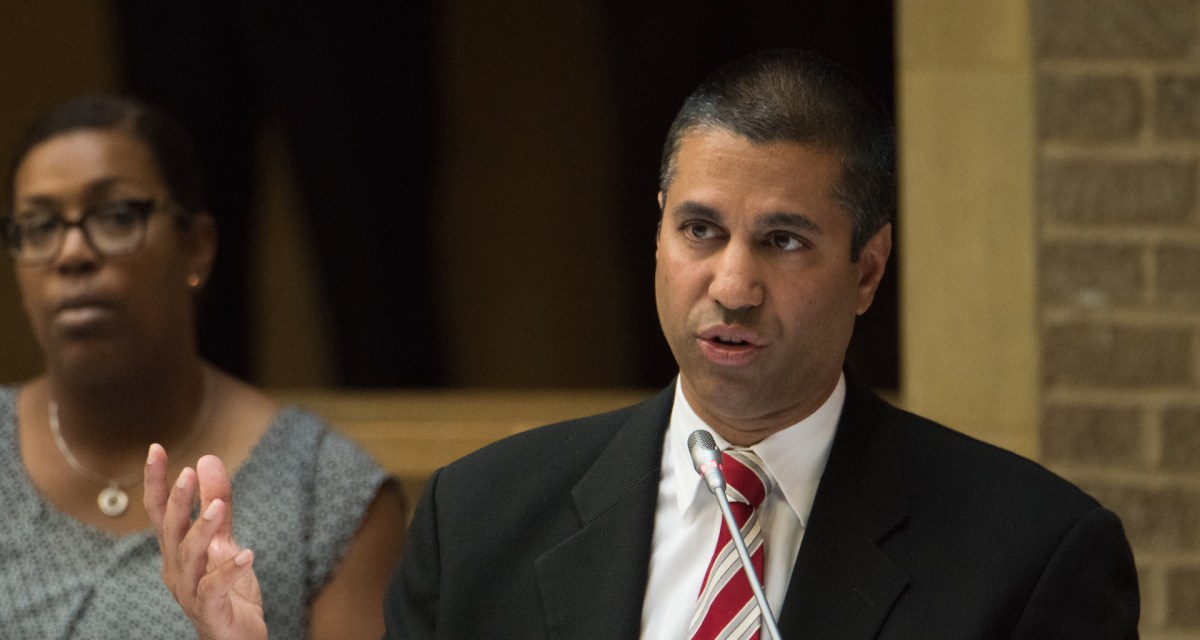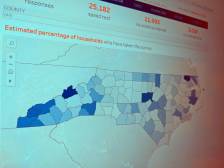FCC’s 5G fund called ‘slap in the face’ to areas struggling to get 4G

The $9 billion plan the Federal Communications Commission announced Wednesday to expand 5G coverage into rural areas was criticized Thursday by lawmakers and state officials who say there’s little economic or technical rationale for building 5G infrastructure in rural areas that are still underserved by the previous generation of wireless technology.
The new program will replace a $4.5 billion program to develop 4G service, known as the Mobility Fund Phase II auction, as the FCC also officially confirms, through its own testing, that wireless coverage maps supplied by phone carriers vastly overrepresent actual coverage.
“It’s a slap in the face for the FCC to say OK, we’re going to scrap [4G deployment] now because we can’t rely on the maps,” said Clay Purvis, the telecommunications director at the Vermont Department of Public Service who spent part of 2018 driving around his state with a box of phones to test the accuracy of the coverage maps offered by wireless companies. “We did it for a reason and it was to improve cell coverage. We haven’t accomplished that, and at great expense to the state’s rate payers.”
FCC Chairman Ajit Pai announced the $9 billion 5G fund alongside an investigative report by FCC staff, who, after conducting 25,000 cellular broadband speed tests of their own, concluded that the 4G coverage maps submitted by nationwide carriers like Verizon, T-Mobile and U.S. Cellular were “likely overstated” and unusable. The result, Pai said Wednesday, is that $4.53 billion set aside for Mobility Fund Phase II, a program that was designed to disperse money to carriers who would expand 4G coverage in rural areas, will roll over into the 5G Fund plan next year, when the FCC begins to make rules for how the $9 billion will be dispersed.
But the the problem with that decision, Purvis said, is that cancelling 4G deployment in place of 5G deployment puts the FCC right back where it started. Purvis and a fellow Vermont DPS employee, Corey Chase, spent thousands of dollars conducting several thousand speed tests themselves across Vermont in 2018 during the FCC’s Mobility Fund Phase II Challenge Process, which enabled government agencies and lawmakers the ability to dispute the 4G coverage maps submitted to the FCC by nationwide carriers.
If the challenges proved successful, carriers would receive federal funding to build out coverage in unserved areas. Purvis and Chase’s tests comprised a fraction of the nearly 20 million independent tests made by state and local entities across the country during the challenge period, which revealed the carrier-submitted maps to be “generally unreliable”, according to FCC spokesperson Mark Wigfield. But rather than punishing the carriers for fraudulent data or expanding efforts to addressing the larger-than-thought gaps in rural 4G coverage, the FCC has chosen to delay any progress by switching to an entirely new plan, Purvis said.
“It’s more time that will pass where Vermonters and other rural people around the country aren’t going to get the cell service they need to make basic voice calls and use the internet,” he said. ”It’s galling. We’re not getting our cell service, which is the whole reason we did the drive tests.”
Part of the frustration experienced by Purvis and other challengers, like the office of Sen. Joe Manchin, D-W.Va., is the lack of funding or distribution detail Pai included in his announcement, beyond setting aside $1 billion of the $9 billion to fill specific 5G needs for the agricultural sector. During an FCC oversight hearing before the House Energy and Commerce Committee Thursday, Commissioner Jessica Rosenworcel told lawmakers that the plan was missing key financial and informational elements for such a large endeavor.
“We’ve got a basic problem,” said Rosenworcel, a member of the FCC’s Democratic minority. “We need maps before money and data before deployment. We’re pumping out press releases about funds, but we are not explaining where we’re going to send them and based on what information.”
Beyond funding concerns, state officials also questioned whether 5G technology is even needed in some areas. While much faster than 4G, 5G operates on shorter wavelengths and must therefore rely devices placed every several hundred feet. That’s not feasible or worthwhile in rural areas that are still struggling to get 4G service, said Jeff Sural, the broadband director of the North Carolina Department of Information Technology.
“We haven’t seen an engineering or network model, or business model for that matter, that demonstrates that 5G will be a viable technology to serve rural areas that are currently unserved with mobile service,” he said. “In many of those areas, the market forces won’t push 4G there. So I’m not sure how they’ll push 5G there even if there were a viable technology to serve those remote areas.”
Purvis said the situation is similar in Vermont, where 4G coverage would be a substantial upgrade over the current cellular speeds in rural areas.
“What we have in Vermont are huge swaths of area where we have no cell coverage whatsoever,” Purvis said. “So why would you bring 5G to that area? Why not start with voice coverage and 4G data coverage and build 5G on from there?”
The FCC’s new plan did have some supporters in Congress, such as Senate Commerce, Science, and Transportation Chairman Roger Wicker, R-Miss., who touted the additional data transmission capabilities that 5G might bring to rural areas in a statement from his office.
“The FCC’s new 5G Fund would be an important investment to deliver next-generation wireless technology to rural areas,” Wicker said.





